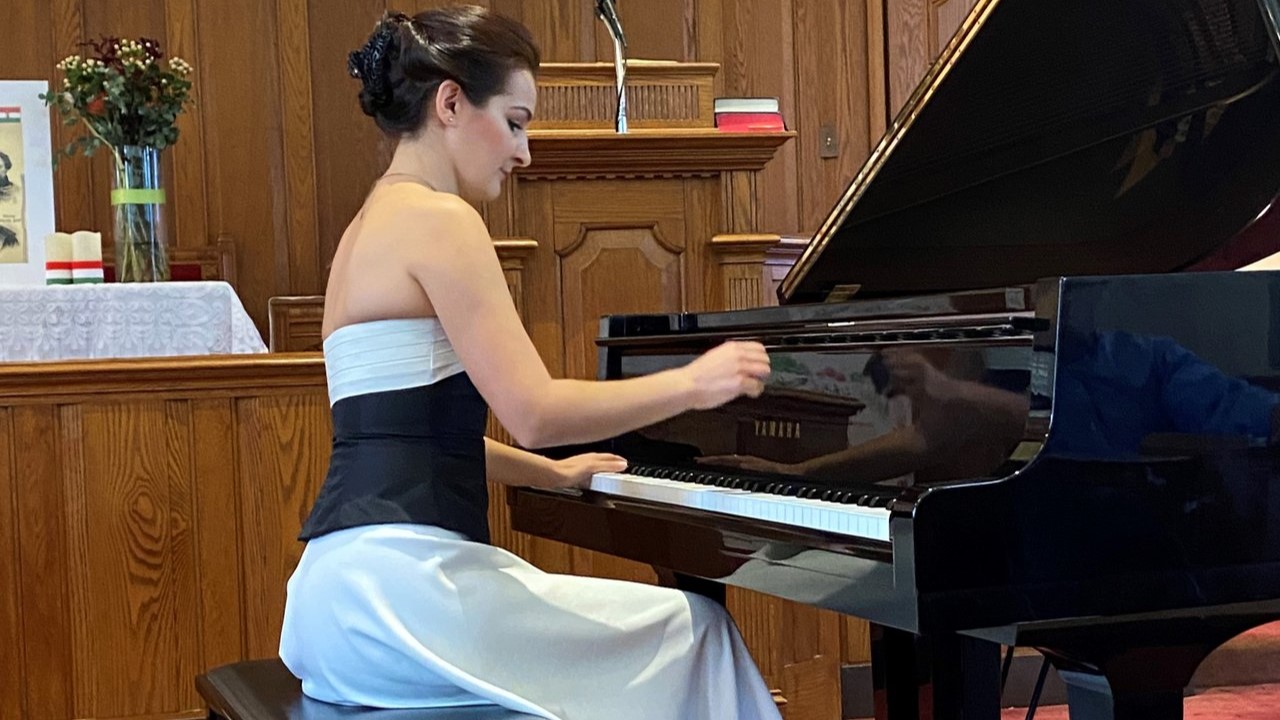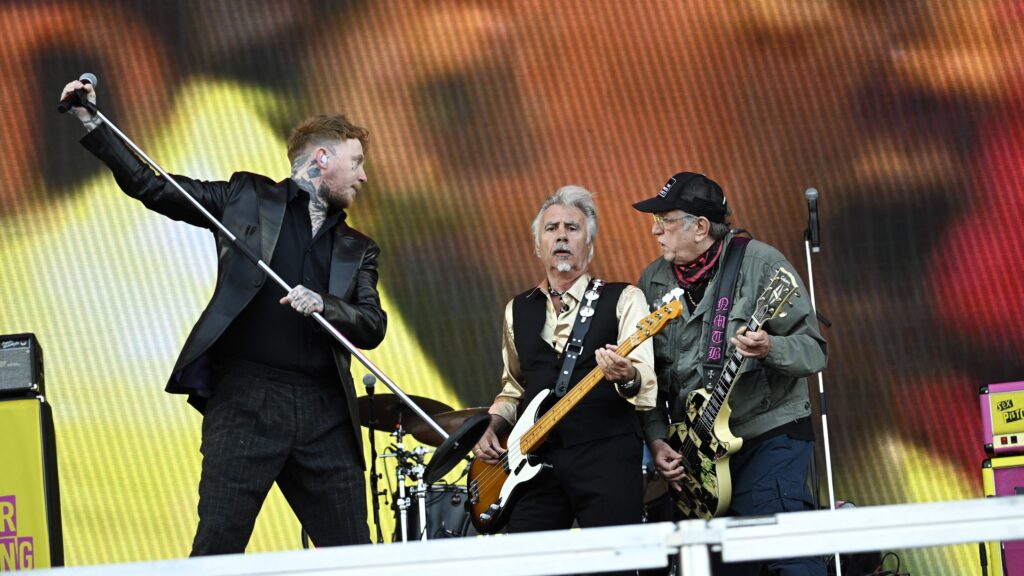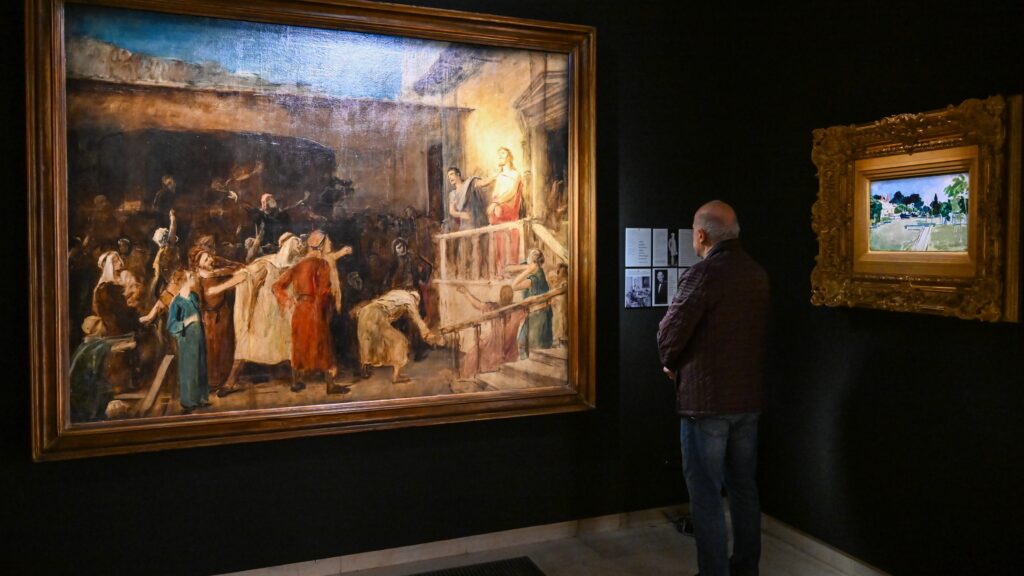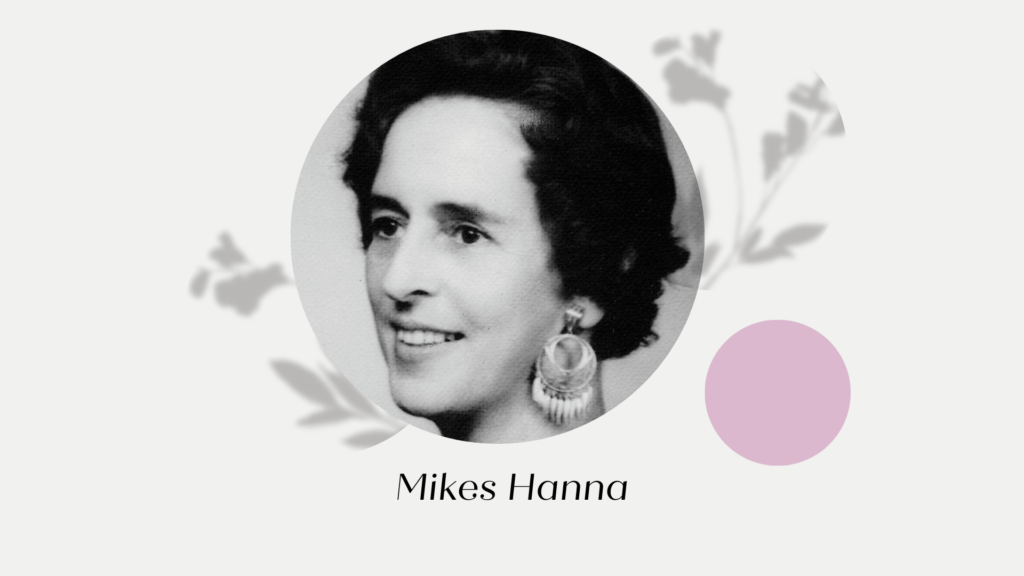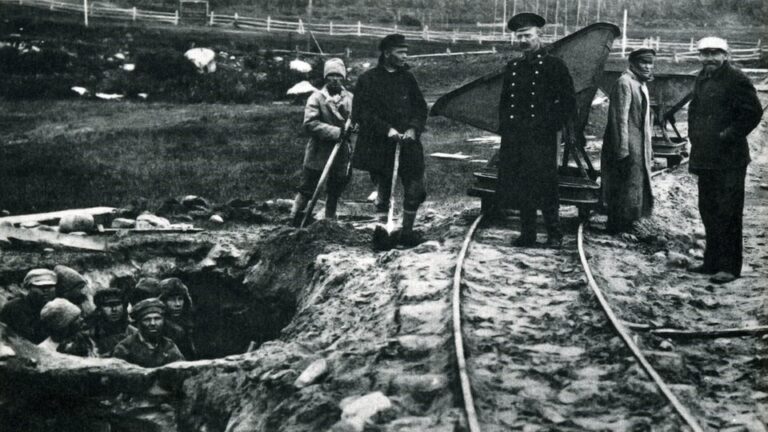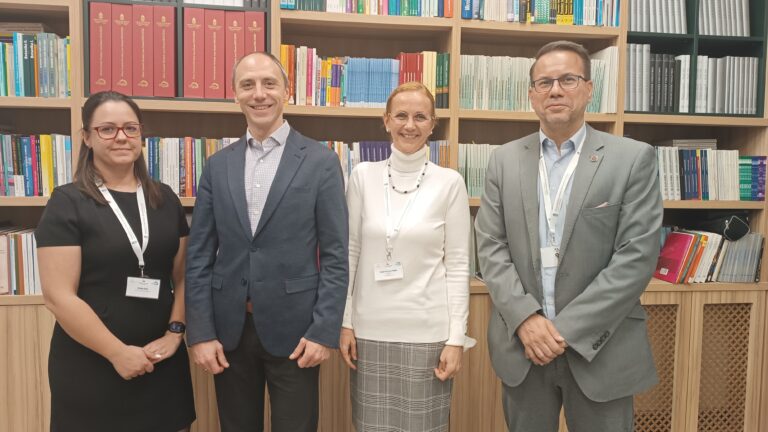This is an abridged version of the original interview published in Reformátusok Lapja and on reformatus.hu on 27 August 2023.
Tünde-Ilona Krasznai, born in Kolozsvár (Cluj-Napoca, Transylvania, Romania), now resides in Fairfield, on the northeastern coast of the U.S., in the state of Connecticut. As a pianist, she has traveled the world and is the proud recipient of numerous awards and honors. Her husband, Tibor Király, is a pastor leading the Hungarian Reformed community in Fairfield, Connecticut, while she is the founder of the Prodigy Piano and Art School, the Hungarian School of Arts, and the Reformed Women’s Association, which work closely with the congregation.
***
When did your love for music begin?
Right when I started playing the piano at the age of five in Kolozsvár. My grandfather, Sándor Miklós Havas, who was the chief organizer of the Hungarian Opera in Kolozsvár for decades, bought us a huge Viennese concert piano as a gift. We still have it today, and during its most recent, two-year-long complex restoration, we discovered that it was much older than we had thought: its manufacturer actually stopped producing pianos after 1850.
The Reformed family and church background were always there. My grandmother, Julianna Krasznai, took her faith seriously; she was an enthusiastic elder, and we attended church regularly. We were actively involved in Kolozsvár’s vibrant religious and cultural life; going to the Hungarian theater and opera four to five times a week, and church on Sundays, where, if we were five minutes late, we wouldn’t even find a seat. During the harshest period of Communism, most Hungarians risked their freedom and livelihood to practice their faith actively within a community. Today, I feel pride in realizing that a significant portion of Kolozsvár’s Hungarians lived as courageous people back then. We had to fight not only for our faith but also for our Hungarian identity, and, of course, against the hardships of Communism. But in that struggle, at least, we were in the same boat as decent Romanian people. Nevertheless, my parents and grandparents managed to ensure that my brother and I saw only the beauty and goodness of that era.
When did you move to Budapest?
After my confirmation, at the age of 14. We lived near Pasaréti Road, on Gábor Áron Street, so we belonged to the Pasarét congregation, but we often went to Kálvin Square with the family as well. After graduating as a piano artist and piano teacher from the Liszt Academy of Music in 2006, I started traveling. My grandmother always sent me off with some ‘faith strengthening’—she’d buy me books by Kálmán Cseri, for instance, which I took with me everywhere. I knew that wherever I went in the world, I’d always find security on the path of faith. That gave me the courage to travel to the Middle East, Asia, Singapore, and America—to places where there were obviously no Reformed churches. But wherever I went, I always sought out local Hungarian communities and church organizations.
How did you first come to America, and what did you experience here?
I had the opportunity to study in the U.S. at two different universities (Montclair State University, New Jersey, and University of California, Los Angeles, UCLA) four times on full scholarships, once as a Fulbright student. I performed frequently in Reformed communities, consulates, and embassies, which allowed me to connect with various Hungarian communities—pastors, secular leaders, and other Hungarian organizations. This is how I ended up in San Francisco in 2013, when then-President János Áder visited the city. I performed at Woodside Priory, a school founded in 1957 by Benedictines who had fled from Pannonhalma, Hungary. From there, I traveled to Florida, to Miami, where I met Pastor Péter Bodor. That’s also where we held our first Trianon memorial concert in 2015. It was inspiring to see that, in America and Canada, Hungarian denominations, along with civil and state organizations, would unite for national holidays, enabling the creation of large-scale Hungarian events. Even then, I could see how strong Hungarian national identity was in the U.S.—they take folk traditions and culture very seriously.
‘We had to fight not only for our faith but also for our Hungarian identity’
How were you able to travel so much alongside your university studies and work? Where was your ‘base’?
I traveled for concerts during breaks and long weekends. The university was supportive because they were happy to have an international Fulbright student representing them, especially at embassies or consulates. When you’re young and don’t yet have a family, you enthusiastically travel everywhere. But my dream was always to establish an interdisciplinary arts school in Budapest.
Why an interdisciplinary arts school?
While teaching at UCLA, part of my job was to highlight the correlations between different art forms so that non-musician students could understand how to engage with the arts. I wanted to show them that all arts are based on the same fundamental principles: we seek perfection, something beyond this world, something elevated and intangible. The arts are essentially about the search for God. The specific branch of art is secondary. This approach worked so well with college students that I wanted to continue teaching in this way, even at the level of young children.
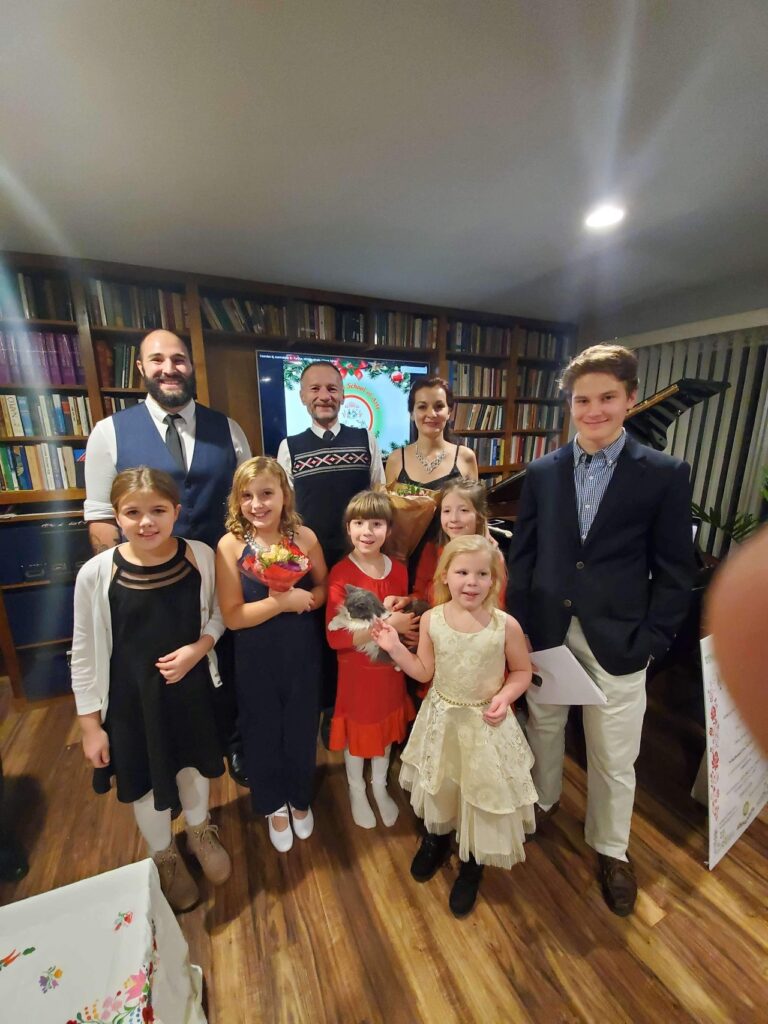
Was that university a Christian institution?
No, not at all, but it was possible to subtly incorporate these ideas. Beyond the required curriculum, we could choose our own topics to teach, as long as we coordinated with the professor. Among other things, I gave a lecture on Wagner’s Tannhäuser to 20- to 23-year-old non-musician students. The professor thought it was too difficult, even for music students, but my goal wasn’t necessarily to analyze the music. Instead, I focused on the opera’s message—it’s a story about redemption.
University rules dictated that faith was a taboo topic. Yet, the students not only understood but also deeply loved the opera because I presented it from a perspective that resonates with young souls: love, disappointment, forgiveness, rejection, redemption, and self-sacrifice. Self-sacrifice is the essence of Christ’s redemption. But it also exists among humans when we deprive ourselves of something for the sake of another, whether in the relationship between a parent and child or a romantic couple. The foundation is always forgiveness and unconditional love.
‘Love, disappointment, forgiveness, rejection, redemption, and self-sacrifice’
Many in the art world do not live a Christian life—in fact, some openly claim that the two are incompatible.
A true artist is so humble that they recognize that it’s impossible to accomplish all this without God. When we achieve more than we are capable of on our own, that’s a blessing. Unfortunately, flawed human nature leads us to attribute these extraordinary achievements to personal success rather than divine grace.
Instead of Budapest, you founded a Hungarian and interdisciplinary arts school in America…
I founded The Prodigy Piano and Art School for piano students and the Hungarian School of Arts within the Hungarian community of Fairfield, Connecticut, where we continue to offer piano instruction and a weekend Hungarian school, but we also have painting, dance, music, and religious education. The Hungarian School of Arts operates as a traditional weekend Hungarian school on Saturdays from 11am to 1pm for children aged five to 18. Beyond that, we are closely connected to the arts. We follow the Kodály method, use Hungarian books, and sing many folk songs. For those of Hungarian descent who don’t speak the language well or at all, the goal is to teach them piano in Hungarian. However, I also have non-Hungarian students who get to know the Kodály method and Hungarian folk songs. For example, I have an American girl born in Nigeria who recently sang in Hungarian, receiving an enthusiastic reception from the Hungarian community. This way, even Americans learn a great deal about Hungarian culture, while Hungarian students who understand but don’t speak the language become integrated into the Hungarian community through music.
Is this interdisciplinary arts education unique because it attracts students to Hungarian culture on multiple levels?
Yes! There are Americans who have no personal ties to Hungary but admire Hungarian culture. That’s why they choose a Hungarian piano teacher and gladly participate in joint concerts, marveling at the fact that we have such a church, organ, community hall, and cohesive community. Moments like these hold up a mirror, showing us how valuable our heritage is—something we often take for granted in our daily lives. Not all Hungarians think the same way about Hungarian identity and traditions, but when they hear this appreciation from a foreigner, it makes them reflect. And we, too, realize once again what great opportunities we have in connection with our homeland—like the Rákóczi Association’s camps for my students, performances in Budapest, university scholarships, and teacher training programs, all of which I regularly attend with the support of the State Secretariat for National Policy.
‘When we achieve more than we are capable of on our own, that’s a blessing’
Another goal is to ensure that children spend as much time as possible in Hungary during the summer, immersed in a Hungarian environment, because that’s how they learn the most. Many of my students are considering moving back to Hungary—to attend high school or university, work, or start a family—because, unfortunately, America is heading in a concerning direction, and serious issues are at stake. Until now, parents only wanted their children to speak Hungarian and understand the basics of Hungarian culture, but now, it seems to be about more than that—their future might depend on it. This increases the responsibility of education: it has become a calling, a life-shaping mission through art and faith. That’s why, in 2020, I completed a program at the University of Pécs that allows us to officially certify students in Hungarian language proficiency. This certification is recognized in the U.S. as a second language. And in 2023, I completed the Diaspora Hungarian Language and Culture Teaching Specialist program at the University of Győr.
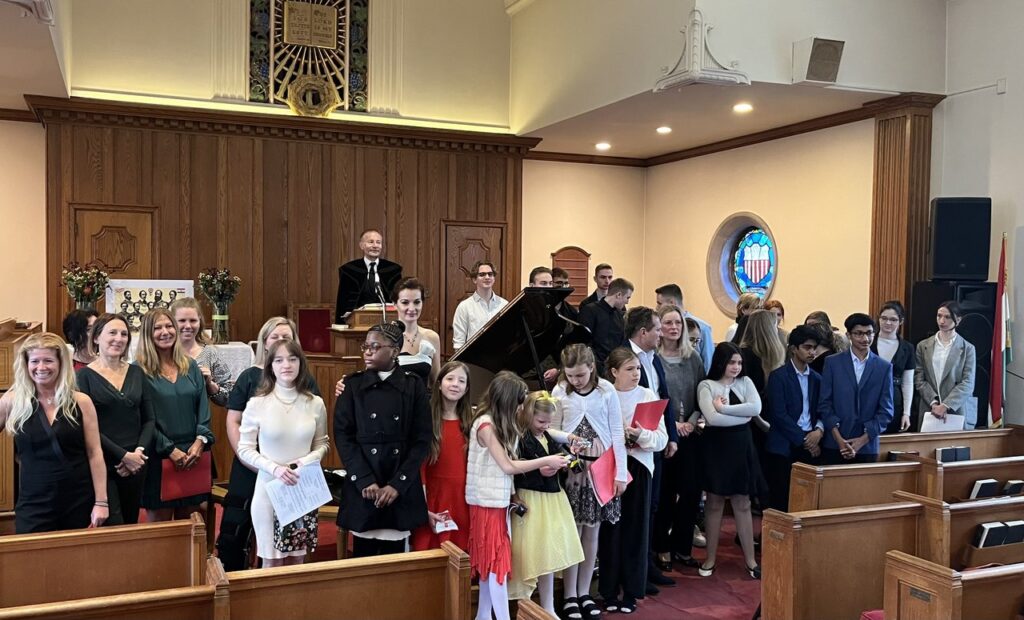
You’re currently at the Rákóczi camp with your students. How many children are you traveling and working with?
Last year was our first major trip—I brought five students, and we not only attended the Rákóczi camp, but also held a joint concert in the beautiful Nádor Hall in Budapest. It wasn’t just us performing; my brother, Gáspár Krasznai, who lives in Budapest and conducts three choirs, invited the award-winning Marosszék Kodály Zoltán Children’s Choir from Sovata, which was founded and is still led by two Catholic nuns. It was incredible to see how Hungarian children from the American diaspora and beyond the borders connected through the arts and performed a magnificent concert together in Budapest. Even more, before that, we joined the Sovata choir for their concerts in Italy—performing in Milan, Bologna, Florence, Rimini, and Arezzo. My students had to learn the same pieces as the professional choir, even singing in Latin, which required intensive preparation.
‘Many of my students are considering moving back to Hungary…because, unfortunately, America is heading in a concerning direction’
After that, the Budapest concert was an uplifting experience—at the end, my students sang together with the children from Szeklerland (Székelyföld, Transylvania). Thanks to the generous invitation from the Sovata choir, we are planning to travel to Transylvania for concerts. We’d take a Kolozsvár–Sovata tour, with a joint performance. Initially, we planned to visit more locations in Transylvania, but since I am now six months pregnant, I decided to limit it to these two locations this year, as well as the Rákóczi camp with six students. However, we plan to continue next year.
You also became a pastor’s wife. Does this mean that you don’t plan to change your active lifestyle? How do you balance your duties as a pastor’s wife?
I don’t plan on changing. Right now, it’s a bit challenging moving around in the heat like a rolling dumpling, but I have help—the mothers of my students support me in everything, so I already have nearly everything I need for the baby in America. As for my responsibilities as a pastor’s wife, when I got married, I didn’t fully understand what this role entailed. I think this calling is a challenge for every pastor’s wife, especially in America, where we have to consider business aspects as well to sustain ourselves. On one hand, our ancestors built magnificent church buildings that include auditoriums, industrial kitchens, churches, and schools, demonstrating how dedicated Hungarian communities were to their faith. But on the other hand, maintaining these today requires involving different cultures. That’s where the arts come in, particularly music. A joint concert or performance can create shared values. The arts are not only an effective tool in education but also in strengthening the congregation.
Read more Diaspora interviews:

